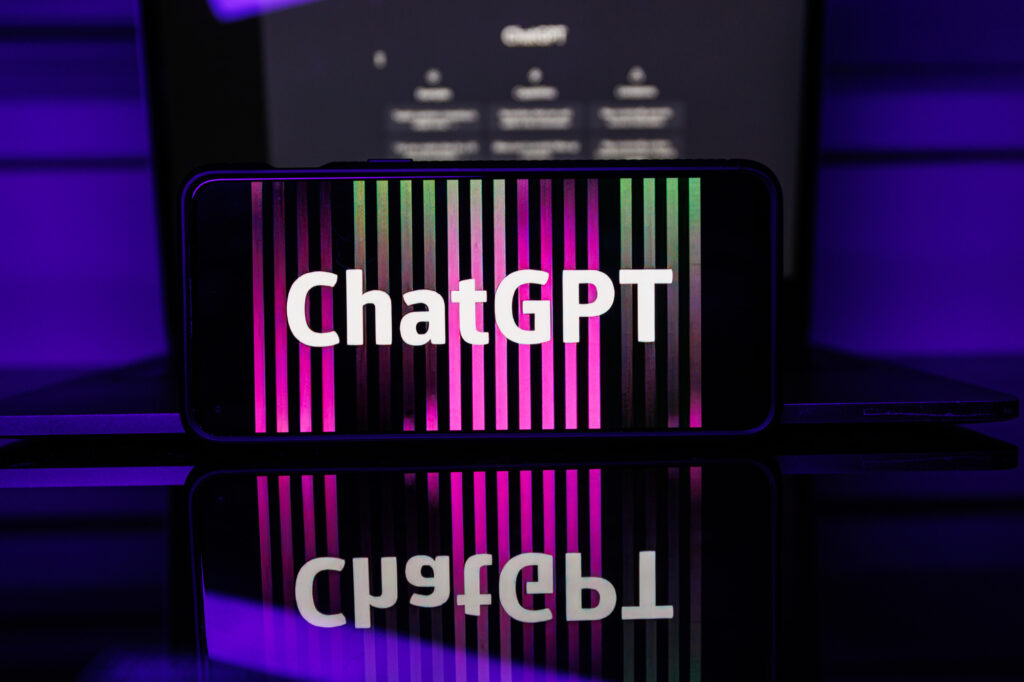AI is no longer just a sci-fi concept from a 90s film. It has the power to help content creators in every phase of the creative process. This article will examine six ways that AI is already supporting content creation, and which tools are leading this charge.
You’ve probably tried Google searches that didn’t give you the results you wanted. You may have wished Siri had a bit more power than the voice assistant that answers your questions about the weather. Meet ChatGPT.
ChatGPT, a chatbot powered by artificial intelligence that will be launched in November 2022 by OpenAI, allows you to ask almost anything. ChatGPT, despite its limitations (only having data from 2021 and occasionally spouting incorrect information), is a powerful tool poised to revolutionize the way content creators create.
The number of content producers is increasing as audiences continue to demand more content on different platforms. It’s difficult to maintain a consistent pace and high-quality publishing without a team. AI can provide content creators with all the assistance they need.
AI is no longer just a sci-fi concept from a 90s film. It has the power to help content creators in every step of the process. This article will examine six ways that AI is already supporting content creation, and which tools are leading this charge.

Create content ideas for multiple channels
Idea generation is one of AI’s most straightforward applications. AI can assist you in developing new, creative content ideas by analyzing your audience and suggesting topics that are relevant to you. It’s especially useful if inspiration is a problem or you have a short deadline.
AI tools can help with idea generation. Examples include Persado which analyzes audience engagement data to suggest topics and ChatGPT an AI tool that can generate stories, articles, and more using a set of user-defined parameters.
When we are looking for inspiration, we use ChatGPT and Lex. It’s a great way to get started with these tools to generate ideas. Give a little context, such as “I run a blog/newsletter/Twitter account that covers X topics.” Next, give your prompt: Write a tweet about X or write a YouTube script on Y.
Asking a chatbot can be as helpful to you in unlocking your creativity as asking a human.
Customize content for your audience
The demand for niche communities is increasing as consumers want to find aesthetics and communities that are hyper-specific.
You can personalize content using AI if you are creating hyper-specific content. For example, you could create supercars specifically for dog owners. It can increase conversions and engagement by making sure that the content is appealing and relevant to the audience. These tools can be used to create personalized content:
- Adobe Target creates personalized content experiences based on the user’s behavior and interests.
- BlueConic, an enterprise tool, uses machine learning to analyze customer data to create personalized experiences based on user preferences and interests.
These tools might not be available to you. Here’s an example of how ChatGPT, a free tool that allows you to personalize content, can do it.
AI tools can help you to create content that is personalized and resonates with your target audience, no matter what your niche.

Streamline your research process
AI can assist you in gathering and organizing data for your content. It will scrape the web to find relevant information, then present it in a format that is easy to digest. You can save time and effort in the search for information. I’ve relied on AI tools for answers that Google can’t provide with the same flair.
ChatGPT created a vegan menu plan for us using foods that are available in Nigeria where. It would have taken us hours to research and refine a table such as this, but with some tweaks, we were able to get it done in seconds. ChatGPT decides whether we will follow the instructions or not.
AI can be used to assist in research. Examples include TextOptimizer which uses natural-language processing to analyze the topic, provide relevant data sources, and identify key points that you should include in your content. RyRob’s Free Keyword Research Tool and chatbots such as those embedded in Lex or ChatGPT.
AI can assist with research, by gathering accurate and timely information from multiple sources. Content creators can save time by focusing on the analysis and synthesis of information, rather than gathering data.
You are BROUGHT BY
Help with the writing process
We write at least 5,000 words a week and we wish we could automate the tedious tasks like line editing, proofreading, and outlining.
Certain AI tools have helped us with editing and proofreading. They identify grammar and spelling mistakes and ensure that the content is written in the right style and tone. It can help save time, and even improve the quality of your final product by catching errors that would otherwise be missed.
You can use tools like Writer to learn about your brand’s style guide and what content should be included. Grammarly is a great tool for keeping Buffer’s tone consistent.
Grammarly lets you set goals and gives recommendations based on the content that you select.
The Writer’s coWrite feature shows how AI can be used to create content. AI can also be used to optimize content. By analyzing the writing and making suggestions for changes, certain tools make it more search engine friendly. It can help improve the visibility of your content and reach a larger audience.
surfer is another example of an AI that can help with content. It’s great because it is a content-optimization platform with AI capabilities that can help you rank higher on Google.

Accessible content
It’s difficult to connect with diverse audiences with a small team or a one-man operation. AI could be the answer since it can make your content more available.
AI can assist with everything, from adding subtitles and captions to videos to translating your text or converting it to speech. Here are some examples:
- Language Translation: Some AI tools can help with translation, including DeepL (also known as “the world’s most accurate translator”). The “world’s most accurate translation” uses neural machine translation to accurately translate texts in real-time from one language into another. Google Translate can also translate text and voice.
- Audio description AI can be used for audio descriptions of visual contents, such as images and videos, to help people with low vision or blindness. VEED automatically creates audio descriptions for visual content using AI.
- Captioning: Create captions automatically for audio and video to make them more accessible to those who are hard of hearing or deaf. The AI tool Automatic Sync Technologies uses machine learning to automatically create captions for audio or video content.
- Text to Speech: AI is used to create audio versions of text content such as blog posts and articles for those who find it difficult to read. NaturalReader is a tool that uses AI to create audio versions of text content.
- Image Recognition: AI is used to analyze and create alternative text descriptions of images for people who cannot see them. It can be easier for them to understand the context and content of the images. Adobe Sensei has a feature that analyzes images and generates alternative text descriptions.
- Text Simplification You can use AI for text analysis and to suggest changes that will make the text simpler and easier to read by people with cognitive disabilities or those who are learning a language. Rewordify analyzes text and suggests changes to make it easier to understand.
You can increase the accessibility of your content by integrating these tools and techniques into your content-creation process. It can ensure that all people have the chance to benefit from and access the content produced.

Create audiovisual content with
If you are not a designer or have a limited budget and need to learn how to create images and videos, AI can assist you. AI can help with several tasks, including
- Deep Dream: A deep-learning algorithm that generates unique abstract images from user input.
- Adobe Sensei: A set of tools for creating and editing videos and images, such as object detection, scene analyses, and background removal. It includes tools for editing and creating images and videos. These include automatic background removal and object detection.
- Pebblely: This tool uses AI technology to transform product images into marketing assets. This is a great solution to the need to invest in photography and allows you to adapt your images for different social media channels.
- Lumen5: This tool uses AI to analyze text and create a video that includes images and music.
- DALL_E: DALL_E is one of the most popular tools for creating images using text inputs.
- Canva: This tool allows you to enter a text string to create a unique image that can be used in your marketing.
These tools will help you to create engaging content for your audience that effectively communicates your message, even if your design skills are limited. You can, for example, use Lumen5 or Deep Dream to quickly create promotional videos based on blog posts or articles.
AI can also assist you in producing high-quality audio or video content by suggesting edits to your work and improving it. It can save time and effort because you don’t have to edit your audio or video files manually. Descript is a tool that helps with audio and video creation. It uses AI to edit video and audio content using features like transcription, overdubbing, and captioning.
Use AI to improve your content creation
AI can assist content creators in producing higher-quality content faster by automating repetitive tasks, providing assistance with research, writing, and editing, and optimizing.
It is important to keep in mind that AI does not replace human creativity or judgment. AI can be used to enhance, not replace, the expertise and skills of content creators. AI can be an ally to content creators who are committed to excellence.